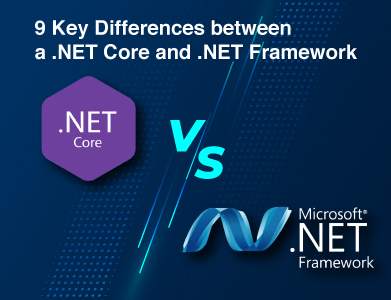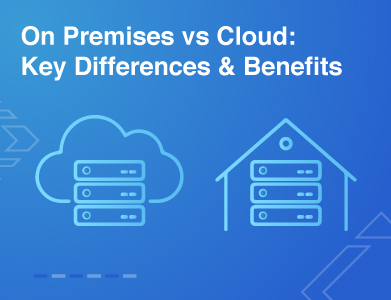Expertise
Every iOS app development starts with an idea. The difference between a prototype and a production-grade app? iOS Architecture!
Choosing the right iOS app architecture is the foundation for scalable code, cleaner testing, and developer sanity (mostly). Whether you’re refactoring legacy or starting fresh, understanding iOS layers and patterns like MVVM, VIPER, and Clean Swift (VIP) can save you countless hours and a few forehead wrinkles.
From simple apps to large codebases with multiple teams, choosing the right structure matters. we’ll walk through the most popular architectures in iOS app development — what they are, when to use them, and why your future self will thank you.
This guide breaks down each approach about what it solves, how it’s structured, and when it makes sense to use with practical explanations (with a few opinions, because we’re developers too).
The iOS System Architecture: Core Layers
Before diving into app structure, let’s revisit what iOS gives us out of the box. These layers define what you’re building on top of—and knowing where things belong can help you avoid hammering screws into wood.
Cocoa Touch (Application Layer)
This is where the UI lives—UIKit, SwiftUI, NotificationCenter, gesture recognizers. It’s all about interface, interaction, and responsiveness.
- UI rendering
- ViewControllers
- User interaction handling
Think of this as the part your users see—and where developers tend to cram too much logic.
Media Layer
Need video playback, custom animations, or fancy filters? This is your layer.
- AVFoundation for camera and audio
- CoreAnimation for view transitions
- Metal for GPU-powered graphics
If you’re building something visual or interactive, chances are you're hanging out here a lot.
Core Services Layer
The brains. This layer handles logic, data, networking, and system features that don’t touch the UI directly.
- CoreData, CloudKit, UserDefaults
- URLSession, JSON parsing
- File management, background tasks
It’s where you keep things smart and scalable. Or messy and untestable, if you’re not careful.
Core OS Layer
The foundation. It includes the security model, file system, thread management, and more.
- Keychain for secure storage
- GCD (Grand Central Dispatch) for concurrency
- System-level diagnostics and permissions
If you're writing here often, either you know what you’re doing or something’s gone terribly wrong.
Why App Architecture Deserves Serious Attention
Let’s be honest: architecture doesn’t feel urgent until it’s too late. One moment your app is flying. Next moment, one tiny bug fix breaks onboarding, payments, and user profiles all at once.
Poor architecture is like duct-taping a jet engine. It might hold. For a bit.
Symptoms:
- ViewControllers with 1,000+ lines of code
- Business logic, API calls, and UI updates tangled together
- Zero-unit tests because "everything depends on everything else"
Good architecture:
- Keeps concerns separated (UI, business logic, navigation)
- Makes testing easy (yes, even networking)
- Allows iOS developers to jump into a new module without a guided tour
Bottom line: your app should grow in complexity without your code doing the same.
Major iOS Architectural Patterns
There are many ways to structure an iOS app, but three architectural patterns continue to gain adoption in modern development environments: MVVM, VIPER, and Clean Swift. Below, we provide a detailed overview of each, including their structure, benefits, challenges, and ideal use cases.
MVVM (Model-View-ViewModel)
MVVM offers a clean, minimal approach to separating UI from logic. It gained popularity with SwiftUI but works just as well with UIKit when implemented thoughtfully.
- Model Contains the raw data structures and business logic. This includes network models, domain entities, and any transformations that don’t depend on the user interface.
- ViewModel Acts as an intermediary between the Model and the View. It prepares data for display, processes user actions, and coordinates state changes. It does not contain UIKit or SwiftUI code.
- View The presentation layer. It renders the UI and observes changes in the ViewModel, typically using reactive bindings (Combine, RxSwift, or simple delegation).
Key Advantages
- Lightweight and easy to implement
- Ideal for SwiftUI due to natural support for data binding
- ViewModels can be tested in isolation
Common Challenges
- Poorly scoped ViewModels can grow too large, handling too many responsibilities
- Complex UI bindings can introduce bugs that are hard to debug
- Coordinating navigation and side effects often requires custom solutions
When to Use
MVVM is ideal for:
- SwiftUI-based apps
- MVPs or early-stage products
- Apps with simple-to-moderate complexity that benefit from reactive UI updates
VIPER (View, Interactor, Presenter, Entity, Router)
VIPER is a highly modular architecture with strict boundaries. It excels in large codebases where multiple developers are working on isolated features, and where unit testing is a high priority.
- View Displays data and captures user interaction. It is intentionally passive and doesn’t contain any logic beyond UI rendering.
- Interactor Implements business logic. It knows how to fetch, store, and manipulate data, but not how to present it.
- Presenter Prepares raw data into display-ready formats and passes it to the View.
- Entity Contains the basic model objects, usually simple data structures.
- Router Manages navigation, screen transitions, and module setup.
Key Advantages
- Very high testability due to strong separation of concerns
- Components are modular, so teams can work in parallel without conflicts
- Encourages adherence to SOLID principles
Common Challenges
- Significant boilerplate, especially when creating new modules
- Slower to implement in small teams or for prototypes
- Requires careful coordination to avoid fragmentation
When to Use
VIPER is best suited for:
- Enterprise-grade apps with long development lifecycles
- Projects with multiple independent teams or modules
- Products with compliance, testing, or code audit requirements
Clean Swift (VIP)
Clean Swift is an adaptation of Uncle Bob’s Clean Architecture, optimized for iOS. It simplifies the strict modularity of VIPER while maintaining clear boundaries between responsibilities.
- View Presents content and delegates user actions
- Interactor Coordinates use cases and business rules
- Presenter Formats data for the View
- Router Manages scene transitions and navigation logic
Key Advantages
- Encourages use-case-driven development
- Each layer is easy to test and replace
- Scales better than MVVM in medium-to-large apps
Common Challenges
- Slightly more verbose than MVVM
- Fewer open-source tools or community templates
- Requires team alignment on naming conventions and structure
When to Use
Clean Swift works well for:
- Teams practicing test-driven development
- Applications with non-trivial business logic
- Mid-to-large apps requiring consistent structure without full VIPER overhead
Reasons to Use Clean Architecture in iOS
- Testability Clean separation of concerns makes it easier to write and maintain automated tests.
- Scalability Modular layers allow teams to scale features without affecting unrelated components.
- Maintainability Changes to business logic don’t require UI changes and vice versa.
- Readability A consistent structure across modules helps developers quickly understand the system.
- Resilience Clean boundaries make apps more robust and less prone to regressions.
Key Features of a Clean iOS App Architecture
- Clearly defined layers with single responsibilities
- Use-case driven Interactors
- Dependency inversion through protocols
- UI-free business logic
- Simple routing and navigation structure
Layers of a Clean iOS Architecture
- View Layer Handles UI and user input
- Interactor Layer Executes business rules and coordinates use cases
- Presenter Layer Formats data into a view model
- Entity Layer Data structures representing business objects
- Router Layer Handles navigation logic and dependency injection
Core Principles of Clean iOS Architecture
- Separation of Concerns Each component handles a single responsibility
- Dependency Inversion High-level modules should not depend on low-level modules; both depend on abstractions
- Test-Driven Development Architecture enables easy mocking and isolated testing
- Modular Design Encourages reusable and replaceable components
- Explicit Use Cases Business logic is executed in well-defined flows
Examples of Apps in Clean Architecture Patterns
Here are real-world examples where clean iOS architecture patterns like Clean Swift, VIPER, or variations of Clean Architecture bring meaningful value.
1. Healthcare Applications
In Healthtech, correctness and compliance go hand in hand. Apps that handle sensitive patient data, integrate with medical devices, or support teleconsultations need tight boundaries between UI, logic, and data. Clean architecture enables:
- Strict separation between patient-facing views and health data models
- Independent testing of critical workflows like dosage calculators, report generation, and authentication
- Easier regulatory audits (HIPAA, GDPR, etc.) thanks to modular and traceable logic
Example workflows
- Telemedicine apps separating video call UI from scheduling and billing logic
- Health tracking apps that sync sensor data through well-isolated use cases
- Diagnostic tools with machine-learning layers decoupled from UI or device-specific code
2. Banking and Fintech Platforms
Banking apps require robust domain models, secure transaction handling, and complex decision engines. Clean architectures shine here by:
- Enabling secure, testable modules for KYC, payments, and account summaries
- Isolating API integrations (e.g. payment gateways, credit scoring) behind clear interfaces
- Reducing the risk of cascading bugs in compliance-sensitive areas
Real value
- TDD is easier with Interactors that validate transactions before forwarding them
- App teams can scale—one team handles UI, another owns money movement logic
- View layers remain lean and don’t touch encryption, tokens, or business rules
3. Logistics, Fleet, and Tracking Apps
These apps deal with high-frequency updates, map rendering, scheduling, and multiple user roles. Clean architecture provides:
- Modular location tracking features that operate independently of the UI
- Use-case driven flows for routing, alerts, and driver status updates
- Reusable services for live status updates, notifications, or syncing offline actions
Why it works
- Easier to maintain per-role UI (e.g. driver vs dispatcher) with shared business rules
- Core tracking logic stays untouched even as visualizations or UI components evolve
- Testing logistics rules doesn’t require a simulator or UI layer
4. B2B SaaS and Enterprise Platforms
Enterprise apps often grow over the years and are maintained by different teams. Clean architecture helps:
- In consistent structure across dozens of modules (e.g., HR, payroll, analytics)
- Enforce clear boundaries between feature teams to avoid cross-module chaos
- Handle integrations (CRM, CMS, Cloud Storage, IAM) via stable, replaceable layers
Key impact
- Feature teams can work in parallel without stepping on each other’s toes
- Long-term maintainability improves due to decoupled logic and minimal shared state
- Even monoliths benefit from "pseudo-microservice" structures within the codebase
Clean Architectures in iOS: Take Your Pick
No architecture is perfect. Each comes with trade-offs. Use Clean Swift for test-driven teams and structured growth. Use VIPER when modularity, team boundaries, and reliability are non-negotiable. Use MVVM when speed, simplicity, and SwiftUI integration take precedence.
A hybrid approach often works best—using MVVM for simpler modules and Clean Swift or VIPER for more critical workflows.
Get Our Expert’s Help for Clean Architecture Implementation
Implementing Clean Architecture successfully requires alignment across engineering, product, and QA teams. If you’re considering migrating your app or starting fresh with a clean architectural foundation, it’s worth investing in expert architectural guidance through internal workshops, architecture reviews, or hands-on support.
Clean code is about structure, resilience, and clarity. Choose architecture intentionally and build something your team will be proud to maintain.
01How do I migrate an existing app to Clean Architecture?
Refactor feature by feature. Start by extracting business logic from ViewControllers into Interactors. Introduce protocols gradually.
02Does Clean Swift replace VIPER?
Not exactly. Clean Swift simplifies VIPER by focusing on fewer layers and use-case-driven design. It’s more approachable but equally powerful.
03Does Clean Architecture overkill for small apps?
Not if you plan to grow the app. However, for one-off prototypes, simpler patterns like MVVM may be more practical.
04Can I use Combine or RxSwift with Clean Architecture?
Yes. You can integrate reactive frameworks in the ViewModel or use case layer without violating Clean Architecture principles.










